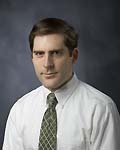Control Seminar
Optimal Control of Vibratory Systems with Power Directionality Constraints
Add to Google Calendar

In many vibration engineering applications, the control hardware exhibits power directionality constraints. A simple example is semiactive (i.e., controllable damping) vibration suppression technology for vehicle suspensions and civil structures. For these systems, energy absorption is controlled by varying the effective viscosities of controllable dashpot elements. This enables the implementation of high-bandwidth, non-colocated feedback control, but feasible feedback laws are prohibited from driving power into the vibratory system. Analogous mathematical problems arise in many other areas of vibration engineering, and recently have emerged as a fundamental aspect of control problems for vibration energy harvesting systems, including small-scale vibration energy scavengers, as well as Megawatt-scale ocean wave energy converters. In these technologies, it is often more economical to use power trains and converters that are capable of only single-directional power transmission. This talk will discuss some of the implications of power directionality constraints, for optimal control design. The presence of these constraints can make some control objectives trivial – most notably, stability robustness. However, performance optimization can be challenging, especially for problems involving stochastic or uncertain systems. An attempt will be made to emphasize common features shared by many application areas. Examples will be presented, pertaining to past work in earthquake engineering, wireless sensing, and ocean wave energy.
In many vibration engineering applications, the control hardware exhibits power directionality constraints. A simple example is semiactive (i.e., controllable damping) vibration suppression technology for vehicle suspensions and civil structures. For these systems, energy absorption is controlled by varying the effective viscosities of controllable dashpot elements. This enables the implementation of high-bandwidth, non-colocated feedback control, but feasible feedback laws are prohibited from driving power into the vibratory system. Analogous mathematical problems arise in many other areas of vibration engineering, and recently have emerged as a fundamental aspect of control problems for vibration energy harvesting systems, including small-scale vibration energy scavengers, as well as Megawatt-scale ocean wave energy converters. In these technologies, it is often more economical to use power trains and converters that are capable of only single-directional power transmission. This talk will discuss some of the implications of power directionality constraints, for optimal control design. The presence of these constraints can make some control objectives trivial – most notably, stability robustness. However, performance optimization can be challenging, especially for problems involving stochastic or uncertain systems. An attempt will be made to emphasize common features shared by many application areas. Examples will be presented, pertaining to past work in earthquake engineering, wireless sensing, and ocean wave energy.
 MENU
MENU 
